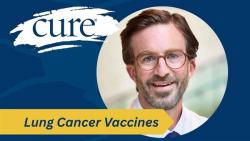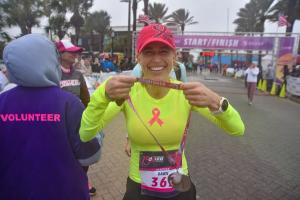Expert Explains Lymphoma After Dave Coulier's Diagnosis
An expert from the CURE® advisory board explains the likely treatability of Dave Coulier’s non-Hodgkin lymphoma.
Dave Coulier, the actor best known for his work as Uncle Joey on the sitcom “Full House,” has stage 3 non-Hodgkin lymphoma.
Coulier, now 65, was first diagnosed in October, and within two weeks of receiving his diagnosis he had undergone the first of six planned chemotherapy treatments, as first reported by PEOPLE.
Lymphomas are cancers of lymphocytes, a type of white blood cell found in the blood, bone marrow, lymph nodes and other tissue, as Dr. James O. Armitage explained in an interview with CURE®.
“Their job is to go out and get rid of things that shouldn't be there,” said Armitage, the Joe Shapiro Professor of Medicine at the University of Nebraska Medical Center and a member of CURE®’s advisory board. “They're the center part of your immune system, and they can catch cancer like any other part of your body can.”
Coulier’s doctors, the actor explained to PEOPLE, told him, “We wish we had better news for you, but you have non-Hodgkin's lymphoma and it's called B cell and it's very aggressive.” B lymphocytes, Armitage said, are involved in making antibodies, and nine out of every 10 cancers in lymphocytes in the United States are in B cells.
Additionally, the most common lymphoma is diffuse large B cell lymphoma, making up about a third of lymphomas, Armitage said, noting that this disease type is aggressive, fast-growing and likely curable.
“Most lymphomas, the treatment of choice will be chemotherapy, the regular cytotoxic drugs, almost always combined with an antibody or kind of immunotherapy. And in B cell lymphoma, it would be some regular chemotherapy drugs, prednisone, which is fits in that category, and then a drug called [Rituxan (rituximab)] usually, an antibody, and that's almost always the first treatment for a lymphoma, and it’s curative in most of the patients.”
Armitage explained to CURE® what can be learned from what we know of Coulier’s disease so far.
Transcript:
Once you diagnose somebody with any kind of lymphoma, just like any other cancer, you want to know some way to help plan what to do about it. After you know the exact name, which is really important because different subtypes are treated in different ways, then you need to know where it is. Obviously, a cancer that's just in one spot, stage 1 if you like, that's going to be easier to treat, everything else [being] equal, than one that's in lots of spots.
For lymphomas, the most common way to stage them is called the Ann Arbor classification. It was developed for Hodgkin lymphoma, but it’s what we typically use. Stage one is [when the cancer is in] just one place. If it's one place, that one place is not in a lymph node, it would usually be called 1E, just extranodal. The important thing isn't the E, it's the one place.
If it's in multiple places but on one or the other side of the diaphragm — most often it's above the diaphragm, but it could be below too and then in multiple places, almost always different lymph node containing areas, so lymph nodes in different parts of the top half or half of the bottom half of your body, that'd be stage 2. If it's in both sides of the diaphragm, it'd be called stage 3. And if it involves the bone marrow, it'd always be called stage 4, or liver or other organs. Usually in that case it wouldn't be localized, it'd be in lymph nodes, plus the other spots, or bone or brain or whatever, then it would be stage 4. That's the typical way to divide them up.
We have a chance to cure, doesn't matter where it is, we've always started out figuring we're going to cure it, but you want to know where it is. So, the person we're talking about [has] B cell lymphoma, if you just go by odds, it'll be diffuse large B cell lymphoma, because that's the most common. But there's probably, depending on how you want to name them, another 10 or 20 choices. And stage 3 means it's above and below the diaphragm, but by using [stage] 3 probably means it's just in lymph nodes by saying it that way, and odds are it's going to be a disease that there'd be a chance to get rid of, probably a good chance to get rid of.
Transcript has been edited for clarity and conciseness.
For more news on cancer updates, research and education, don’t forget to subscribe to CURE®’s newsletters here.
Related Content
 What Does Minimal Residual Disease Mean?
What Does Minimal Residual Disease Mean?December 11th 2025
 Expert Shares Advice for Navigating a New Lung Cancer Diagnosis
Expert Shares Advice for Navigating a New Lung Cancer DiagnosisNovember 27th 2025
 What Is the Difference Between a Clinical Trial and a Real-World Study?
What Is the Difference Between a Clinical Trial and a Real-World Study?September 27th 2025
View additional resources on CureToday.com














